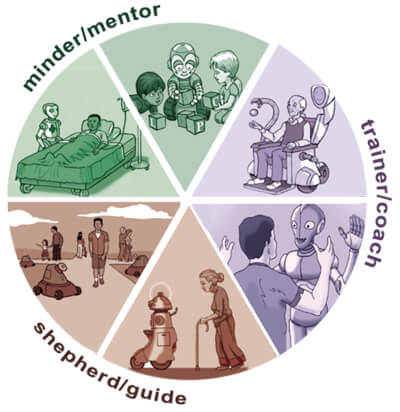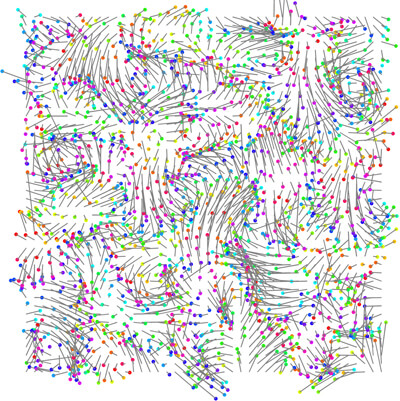Engineering Autonomous & Complex Systems
The Science of Circuitry

A vision of assistive robots for providing care where human care is unavailable, and improving human quality of life.
Biological systems have long inspired engineers because of their robustness, resiliency, flexibility and adaptivity. The USC Viterbi School of Engineering research in this area will discover the fundamental principles underlying these properties thereby enabling the creation of a new generation of devices, robots, vehicles, and systems. This research area addresses the following questions:
How can we create robots that function seamlessly alongside and in collaboration with people in human everyday environments ranging across scales from the very small (nano-scale artery scrapers) to human sized (in-home caregivers), to the very large (autonomous vehicles for environmental exploration and space structures)? How do we utilize robotic structures for a new era of manufacturing, such as additive manufacturing? How do we use robots to test theories of the brain, human behavior, and social interaction? Progress in this endeavor is predicated on fundamental advances in mechanics, estimation, optimization, perception and control, and human-machine interaction. Research at USC in these areas is part of the National Robotics Initiative – a crosscutting initiative across all federal agencies supporting robotics research.

Close-up of a robotic finger with a BioTac sensor
How do we create a transportation system that reliably moves three orders of magnitude more people per year than presently possible addressing both new infrastructure and sensing tools for transportation networks, to self-driving cars, trains, ships and planes? How do we design transportation networks where some entities are autonomous systems and others are human-piloted? How do we create a learning healthcare system in which outcomes, cost and effectiveness is continuously and objectively measured, evaluated at a national scale and used to drive continuous improvement in health care and to identify potential health risks before they cause harm? Research in complex software-intensive systems comprising dynamical networks, multi-agent systems and big-data management and analysis will be key drivers in these areas.

Organization of visual information in the brain, generated through computer simulations.
How do we create networks of systems that are composed of communicating constituents that self-organize and self-heal with the agility of biological systems at all scales from microbes, to schools of fish, to human crowds and mobs, both physical and virtual? How can insights from the social sciences be combined with mathematical tools to develop new engineering methods to design self-organizing systems? How do we design and control systems with strong human interfaces? This area of research emphasizes modeling bio-dynamical systems, their interaction, motion and dynamics.
How do we create and design new-generation autonomous vehicles to explore the frontiers of space and of deep oceans? How to communicate under adverse and extreme conditions?
Published on December 9th, 2016
Last updated on January 1st, 2021







